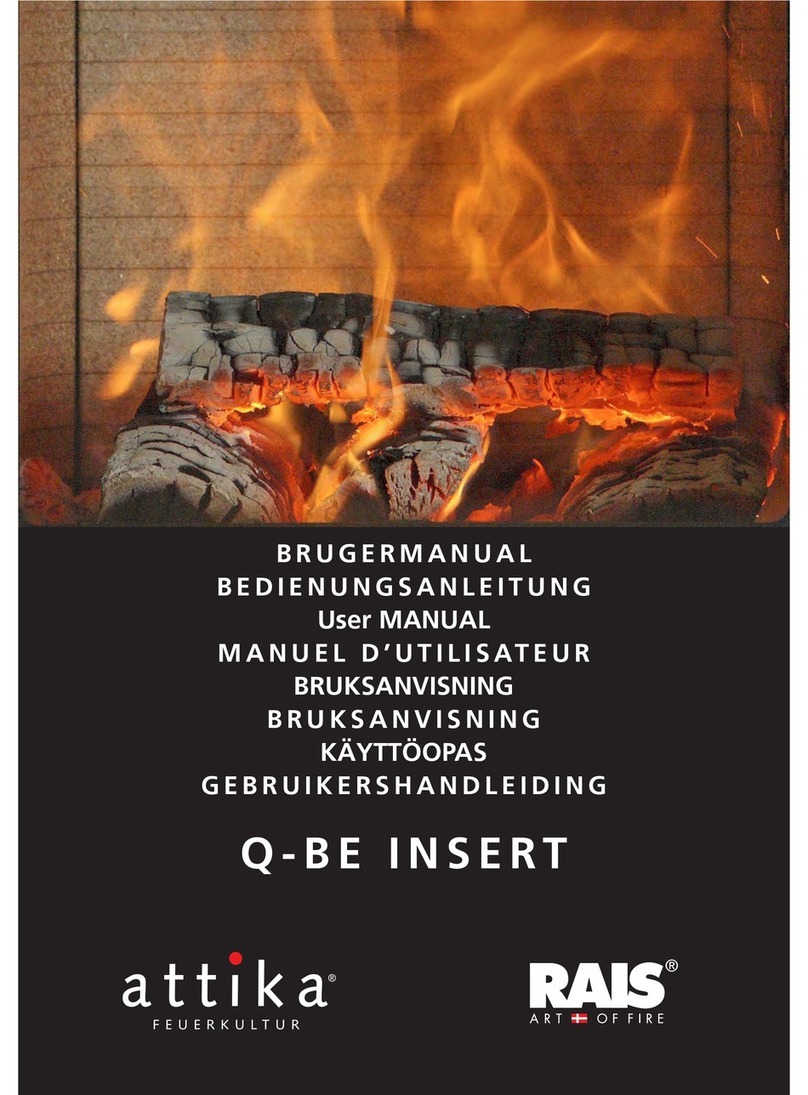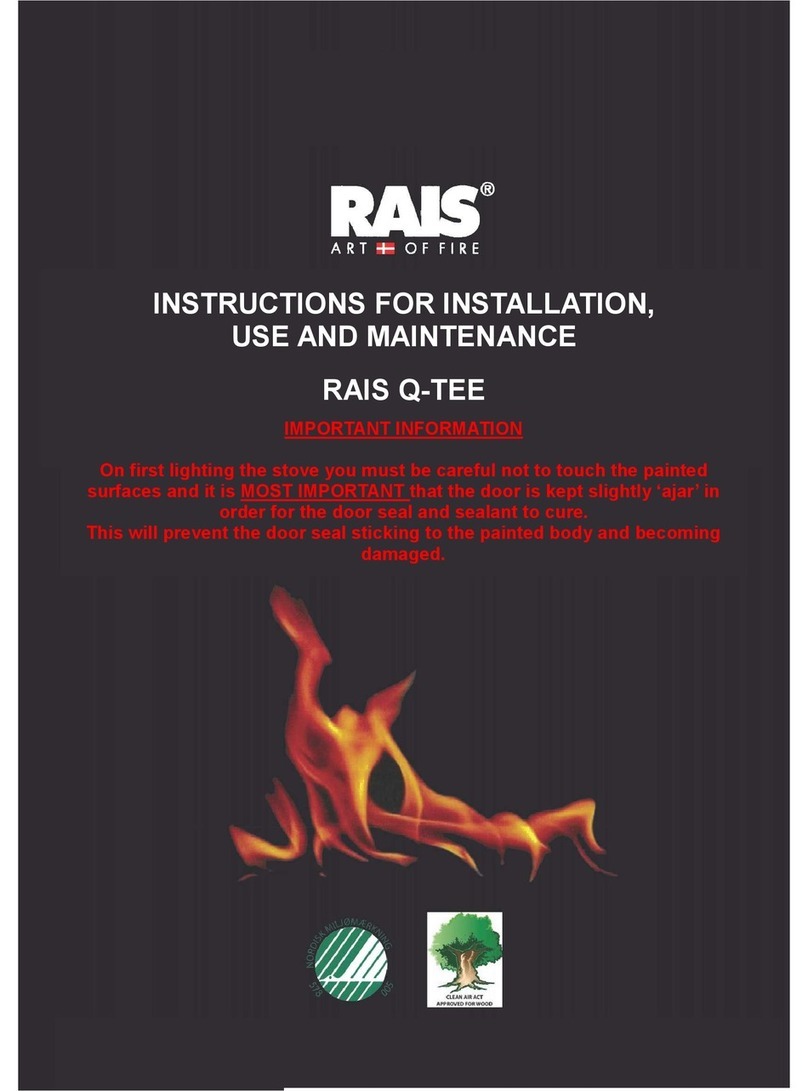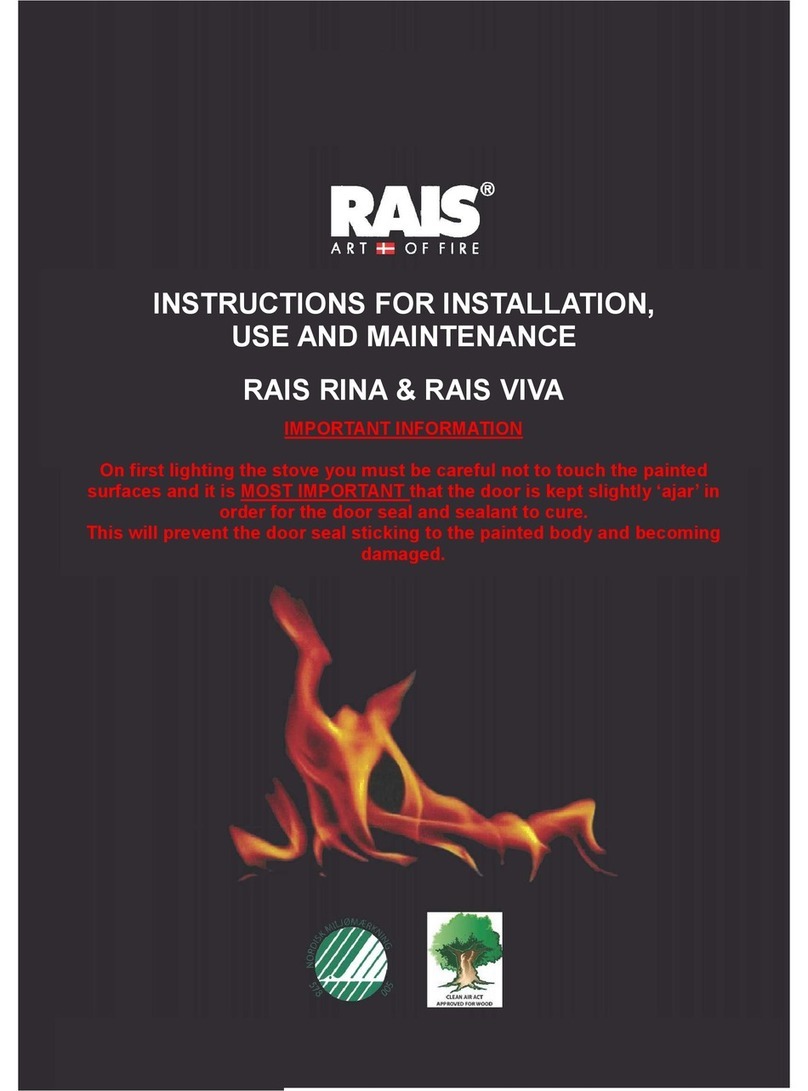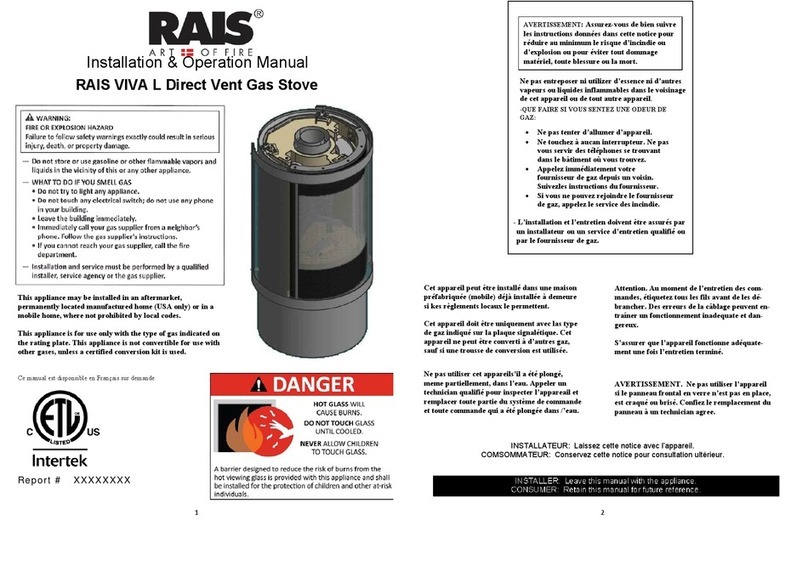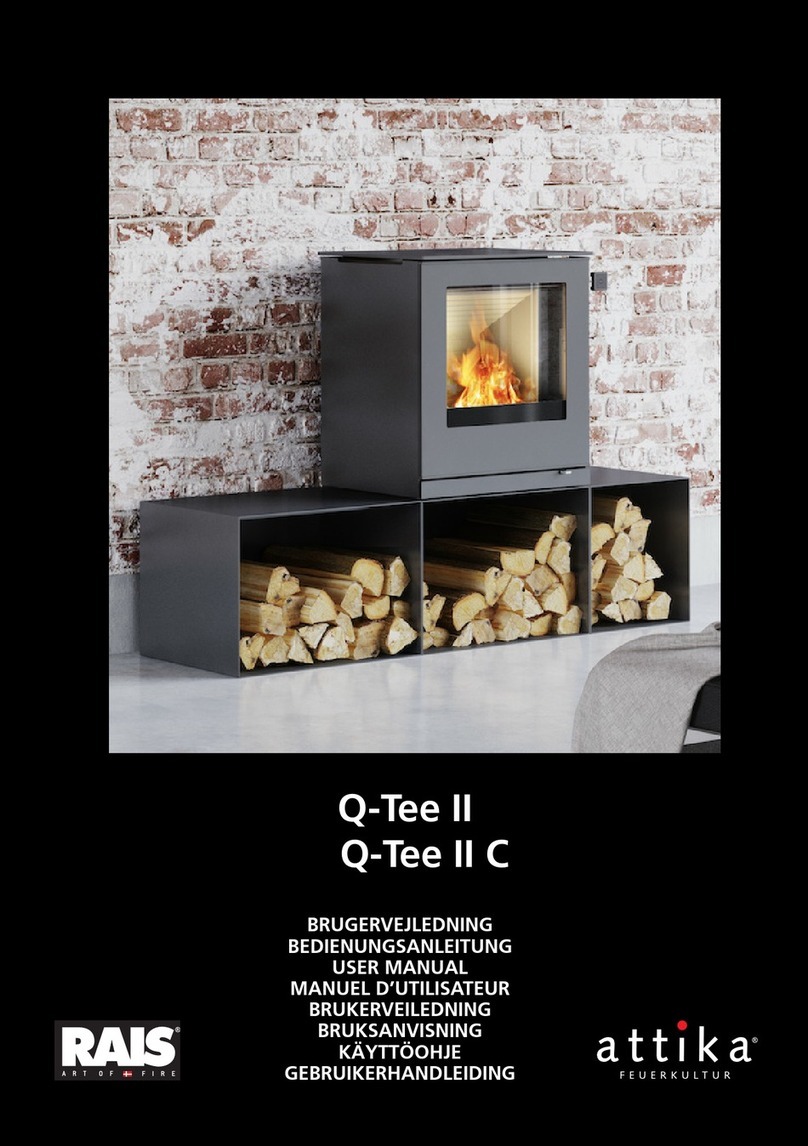ENGLISH RAIS - manual for Rais Q-Tee 2
7
January 2014 Q-Tee 2 Manual
SUPPLEMENTARY OPERATING INSTRUCTIONS FOR THE UK MARKET
TO BE READ IN CONJUNCTION WITH THOSE IN THE INSTRUCTION BOOKLET
READ THE INSTRUCTION BOOKLET AND THESE INSTRUCTIONS
READ THE INSTRUCTION BOOKLET AND THESE INSTRUCTIONS
READ THE INSTRUCTION BOOKLET AND THESE INSTRUCTIONS
CAREFULLY BEFORE USING THE STOVE
CAREFULLY BEFORE USING THE STOVE
CAREFULLY BEFORE USING THE STOVE
WARNING NOTE
Properly installed, operated and maintained this stove will not emit fumes into the dwelling. Occasional
fumes from de‑ashing and re‑fuelling may occur. However, persistent fume emission is potentially
dangerous and must not be tolerated. In the event of fume emission from the appliance, then the following
immediate action should be ta en: ‑
(a) Open doors and windows to ventilate room and then leave the premises
(b) Let the fire go out
(c) When safe to do so, chec for flue or chimney bloc age and clean if required
(d) Do not attempt to relight the fire until the cause of the fume emission has been identified and corrected. If
necessary see expert advice.
The most common cause of fume emission is flueway or chimney bloc age. For your own safety these must
be ept clean at all times.
IMPORTANT NOTES
General
Before lighting the stove chec with the installer that the installation wor and commissioning chec s
described in the installation instructions have been carried out correctly and that the chimney has been
swept clean, is sound and free from any obstructions. As part of the stoves’ commissioning and handover
the installer should have shown you how to operate the stove correctly.
CO Alarm
Your installer should have fitted a CO alarm in the same room as the appliance. If the alarm sounds
unexpectedly, follow the instructions given under “Warning Note” above.
Use of fireguard
When using the stove in situations where children, aged and/or infirm persons are present a fireguard must
be used to prevent accidental contact with the stove. The fireguard should be manufactured in accordance
with BS 8423:2002 (Replaces BS 6539).
If the fire is left unattended a spar guard to BS 3248, specification for spar guards for use with solid fuel
appliances should be used.
C imney cleaning
The chimney should be swept at least twice a year. It is important that the flue connection and chimney are
swept prior to lighting up after a prolonged shutdown period.
If the stove is fitted in place of an open fire then the chimney will require sweeping after a month of
continuous operation. This is a precaution to ensure that any “softer” deposits left from the open fire usage
have not been loosened by the higher flue temperatures generated by the closed stove.
In situations where it is not possible to sweep through the stove the installer will have provided alternative
means, such as a soot door. After sweeping the chimney the stove flue outlet and the flue pipe connecting
the stove to the chimney must be cleaned with a flue brush.
T e Clean Air Act 1993 and Smoke Control Areas
Under the Clean Air Act local authorities may declare the whole or part of the district of the authority to be a
smo e control area. It is an offence to emit smo e from a chimney of a building, from a furnace or from any
fixed boiler if located in a designated smo e control area. It is also an offence to acquire an "unauthorised
fuel" for use within a smo e control area unless it is used in an "exempt" appliance ("exempted" from the
controls which generally apply in the smo e control area).
The Secretary of State for Environment, Food and Rural Affairs has powers under the Act to authorise


